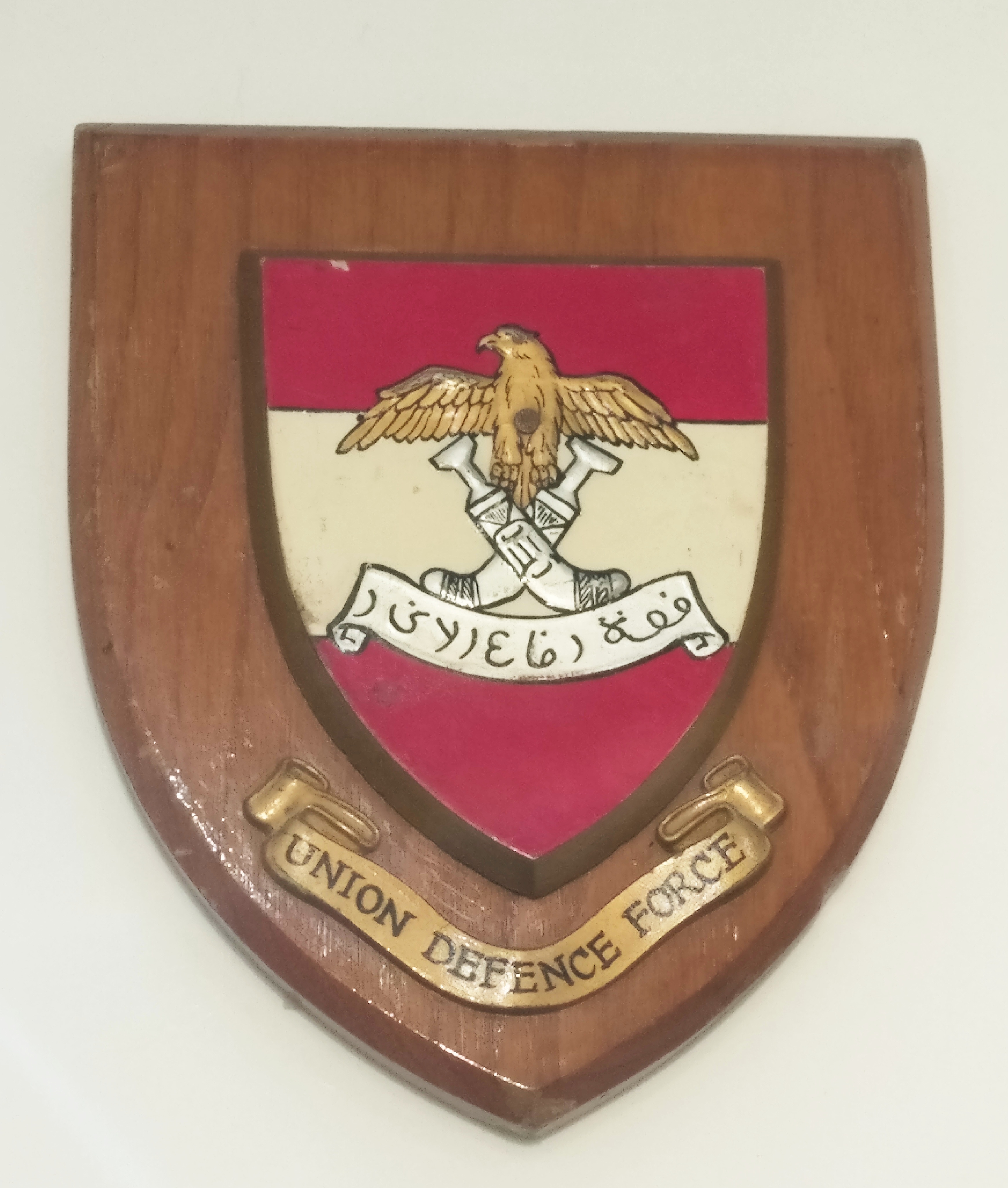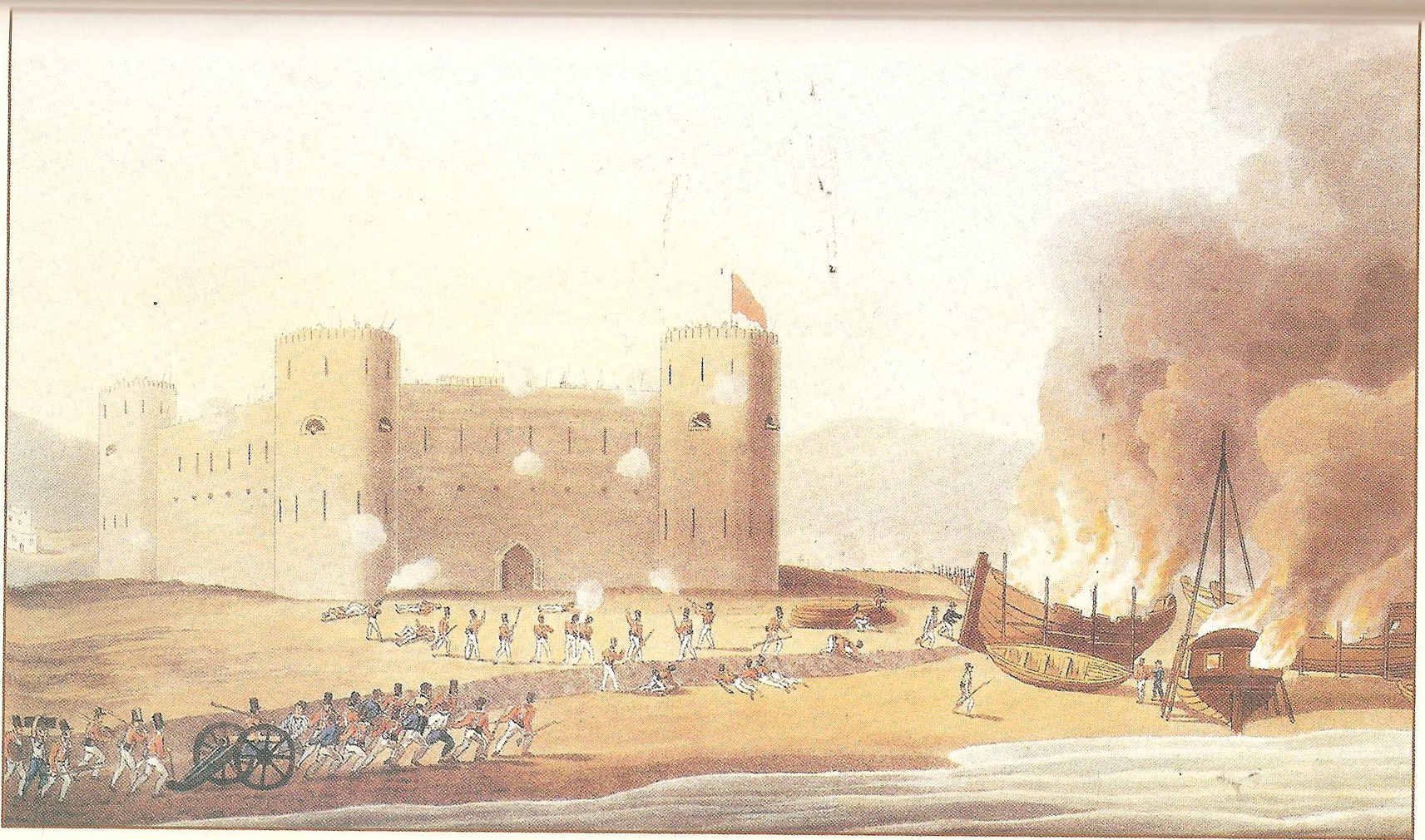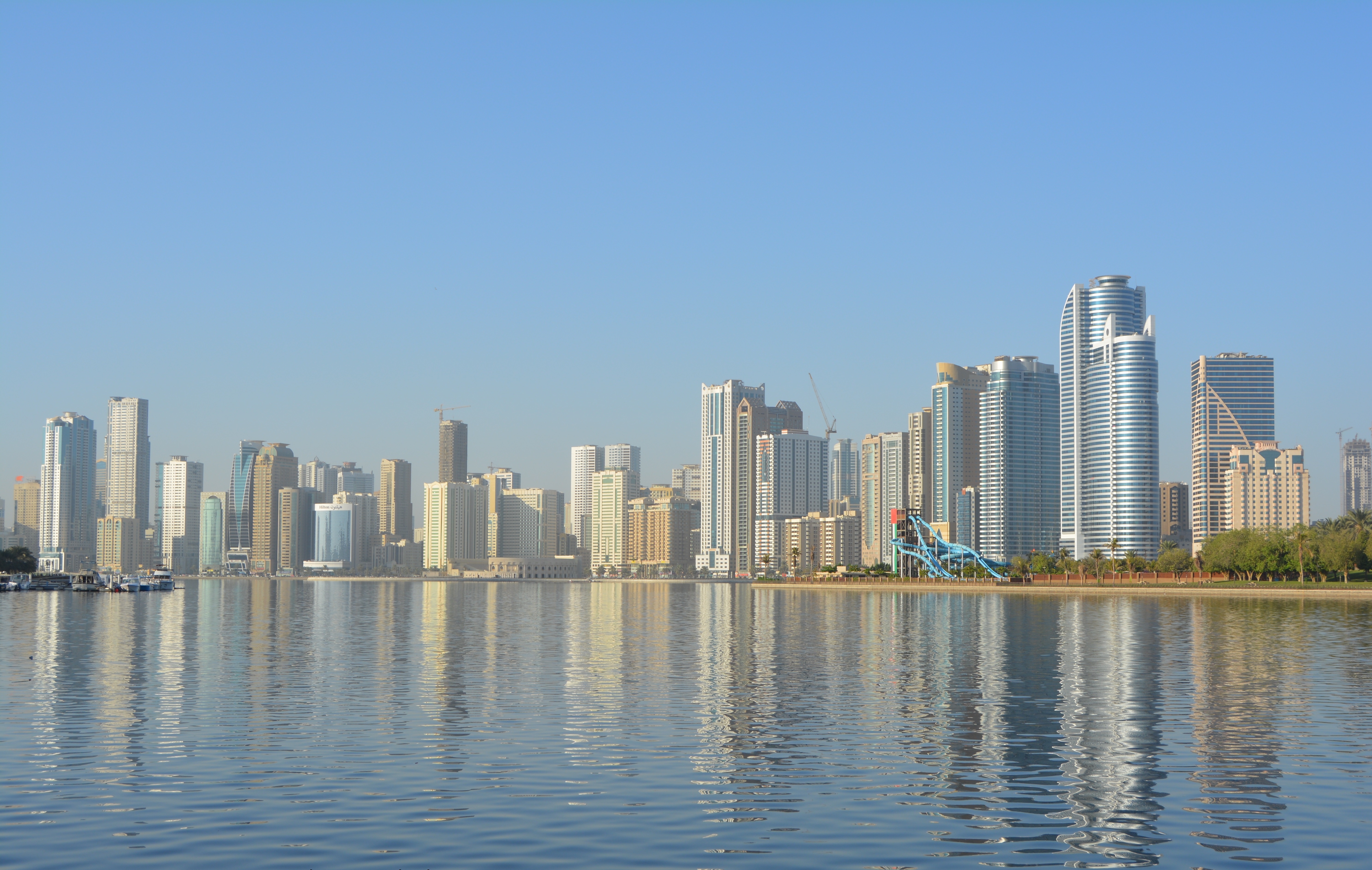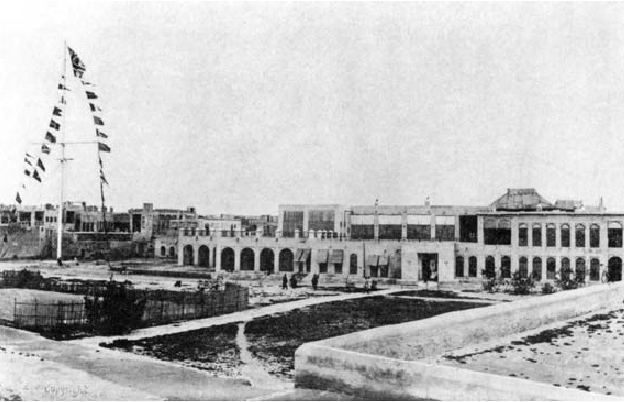|
Trucial Oman Levies
The Trucial Oman Scouts was a paramilitary force that the British raised in 1951 as the Trucial Oman Levies, to serve in the Trucial States. In 1956, the Levies were renamed the Trucial Oman Scouts. In 1971, upon the formation of the United Arab Emirates (UAE), the scouts were handed to the United Arab Emirate's government and formed its Federal Union Defence Force (UDF) which is today renamed as the United Arab Emirates Armed Forces. The Trucial Oman Scouts were a highly respected and impartial gendarmerie and were regarded as well trained, well paid, and efficient. Trucial Oman Levies The Trucial Oman Scouts were established at Sharjah, in a location adjacent to the RAF base, originally as the Trucial Oman Levies (TOL) in 1951, but renamed in 1956 by Chief of the Imperial General Staff (CIGS), Field Marshal Templar. Substituting the word 'scout' for 'levies' was done to eliminate the impression that the force was conscripted, as well as to make the force sound more exotic and a ... [...More Info...] [...Related Items...] OR: [Wikipedia] [Google] [Baidu] |
Trucial States
The Trucial States ( '), also known as the Trucial Coast ( '), the Trucial Sheikhdoms ( '), Trucial Arabia or Trucial Oman, was the name the British government gave to a group of tribal confederations in southeastern Arabia whose leaders had signed protective treaties, or truces, with the United Kingdom between 1820 and 1892. The Trucial States remained an informal British protectorate until the treaties were revoked on 1 December 1971. The following day, six of the sheikhdoms—Dubai, Abu Dhabi, Sharjah, Ajman, Umm Al Quwain and Fujairah—formed the United Arab Emirates; the seventh, Ras Al Khaimah, joined on February 10, 1972. Overview The sheikhdoms included: * Abu Dhabi (1820–1971) * Ajman (1820–1971) * Dubai (1835–1971) * Fujairah (1952–1971) * Ras Al Khaimah (1820–1972) * Sharjah (1820–1971) * Umm Al Quwain (1820–1971) The sheikhdoms permanently allied themselves with the United Kingdom through a series of treaties, beginning with the General Maritime ... [...More Info...] [...Related Items...] OR: [Wikipedia] [Google] [Baidu] |
Sultan Of Oman
The sultan of the Sultanate of Oman is the monarchical head of state and head of government of Oman. It is the most powerful position in the country. The sultans of Oman are members of the Busaid dynasty, which has been the ruling family of Oman since the mid-18th century. Haitham bin Tariq is the current sultan, reigning since 11 January 2020. List of imams (751–1406) List of imams (1406–1749) Nabhani dynasty (1406–1624) Yaruba dynasty (1624–1749) List of sultans (1749–present) Succession On 12 January 2021, the current Sultan, Haitham bin Tariq officially changed the Basic Law of State, stipulating the creation of the post for the Crown Prince of Oman and appointed his first son, Theyazin bin Haitham as the apparent successor, making him the first Crown Prince of the Sultanate. 2021 changes On 11 January 2021, the new Sultan, Haitham bin Tariq changed the Basic law of the state and charted out the procedures for succession in the future. As per the n ... [...More Info...] [...Related Items...] OR: [Wikipedia] [Google] [Baidu] |
Special Air Service
The Special Air Service (SAS) is a special forces unit of the British Army. It was founded as a regiment in 1941 by David Stirling and in 1950, it was reconstituted as a corps. The unit specialises in a number of roles including counter-terrorism, hostage rescue, direct action and covert reconnaissance. Much of the information about the SAS is highly classified, and the unit is not commented on by either the British government or the Ministry of Defence due to the secrecy and sensitivity of its operations. The corps currently consists of the 22 Special Air Service Regiment, the regular component, as well as the 21 Special Air Service Regiment (Artists) (Reserve) and the 23 Special Air Service Regiment (Reserve), which are reserve units, all under the operational command of United Kingdom Special Forces (UKSF). Its sister unit is the Royal Navy's Special Boat Service which specialises in maritime counter-terrorism. Both units are under the operational control of the Directo ... [...More Info...] [...Related Items...] OR: [Wikipedia] [Google] [Baidu] |
Jebel Akhdar War
The Jebel Akhdar War ( ar, حرب الجبل الأخضر , Ḥarb al-Jebel el-ʾAkhḍar, lit=the Green Mountain War) Globalsecurity.org. Retrieved on 2012-04-12. or the Oman WarJ. E. Peterson Britain and 'the Oman War': An Arabian Entanglement Britain and 'the Oman War': An Arabian Entanglement. Pages 285-298. Published online: 06 August 2008. ( ar, حرب عمان , Ḥarb ʻumān), also known as Jebel Akhdar rebellion, broke out in 1954 and again in 1957 in , as an effort by th ... [...More Info...] [...Related Items...] OR: [Wikipedia] [Google] [Baidu] |
Military Medal
The Military Medal (MM) was a military decoration awarded to personnel of the British Army and other arms of the armed forces, and to personnel of other Commonwealth countries, below commissioned rank, for bravery in battle on land. The award was established in 1916, with retrospective application to 1914, and was awarded to other ranks for "acts of gallantry and devotion to duty under fire". The award was discontinued in 1993, when it was replaced by the Military Cross, which was extended to all ranks, while other Commonwealth nations instituted their own award systems in the post war period. History The Military Medal was established on 25 March 1916. It was awarded to other ranks including non-commissioned officers and warrant officers, and ranked below the Distinguished Conduct Medal (DCM). Awards to British and Commonwealth forces were announced in the ''London Gazette'', but not honorary awards to allied forces. (Lists of awards to allied forces were published by The N ... [...More Info...] [...Related Items...] OR: [Wikipedia] [Google] [Baidu] |
Military Cross
The Military Cross (MC) is the third-level (second-level pre-1993) military decoration awarded to officers and (since 1993) other ranks of the British Armed Forces, and formerly awarded to officers of other Commonwealth countries. The MC is granted in recognition of "an act or acts of exemplary gallantry during active operations against the enemy on land" to all members of the British Armed Forces of any rank. In 1979, the Queen approved a proposal that a number of awards, including the Military Cross, could be recommended posthumously. History The award was created on 28 December 1914 for commissioned officers of the substantive rank of captain or below and for warrant officers. The first 98 awards were gazetted on 1 January 1915, to 71 officers, and 27 warrant officers. Although posthumous recommendations for the Military Cross were unavailable until 1979, the first awards included seven posthumous awards, with the word 'deceased' after the name of the recipient, from rec ... [...More Info...] [...Related Items...] OR: [Wikipedia] [Google] [Baidu] |
Avro Lincoln
The Avro Type 694 Lincoln is a British four-engined heavy bomber, which first flew on 9 June 1944. Developed from the Avro Lancaster, the first Lincoln variants were initially known as the Lancaster IV and V; these were renamed Lincoln I and II. It was the last piston-engined bomber operated by the Royal Air Force (RAF). The Lincoln attained operational status in August 1945. It had been initially assigned to units of the Tiger Force, a Commonwealth heavy bomber force which had been intended to play a role in the Japan campaign in the closing stages of the Second World War, but the war ended before the Lincoln could participate. Production of the type proceeded and the type was adopted in quantity, complementing and progressively replacing the Lancaster in RAF service during the late 1940s. The Lincoln was deployed on operations during the 1950s. RAF squadrons equipped with the type fought against guerrilla fighters during the Mau Mau Uprising in Kenya; the RAF and the Ro ... [...More Info...] [...Related Items...] OR: [Wikipedia] [Google] [Baidu] |
Sharjah
Sharjah (; ar, ٱلشَّارقَة ', Gulf Arabic: ''aš-Šārja'') is the third-most populous city in the United Arab Emirates, after Dubai and Abu Dhabi, forming part of the Dubai-Sharjah-Ajman metropolitan area. Sharjah is the capital of the eponymous emirate. The emirate shares legal, political, military and economic functions with the other emirates of the UAE within a federal framework, although each emirate has jurisdiction over some functions such as civil law enforcement and provision and upkeep of local facilities. Sharjah has been ruled by the Al Qasimi dynasty since the 18th century. The city is a centre for culture and industry, and alone contributes 7.4% of the GDP of the United Arab Emirates. The city covers an approximate area of 235 km2 and has a population of over 800,000 (2008). The sale or consumption of alcoholic beverages is prohibited in the emirate of Sharjah without possession of an alcohol licence and alcohol is not served in hotels, restaura ... [...More Info...] [...Related Items...] OR: [Wikipedia] [Google] [Baidu] |
Vickers Valetta
The Vickers Valetta is a twin-engine military transport aircraft developed and produced by the British manufacturing company Vickers-Armstrongs Ltd. Developed from the Vickers VC.1 Viking compact civil airliner, it was an all-metal mid-wing monoplane with a tailwheel undercarriage. Development of the Valetta commenced during immediate postwar years as a consequence of Royal Air Force (RAF) interest in a military transport model of the Viking. Amongst the requirements stipulated for the aircraft was the need for it to rapidly alternate between various different roles, including that of a troop transport, air ambulance, freighter, glider tug and paratroop carrier. To accommodate these various roles, many of the aircraft's furnishings were designed to be rapidly removed and replaced by alternative configurations. Further design changes from the Viking included the adoption of more powerful Bristol Hercules 230 radial engines, a reinforced cabin floor and a strengthened undercarr ... [...More Info...] [...Related Items...] OR: [Wikipedia] [Google] [Baidu] |
Bedouin
The Bedouin, Beduin, or Bedu (; , singular ) are nomadic Arab tribes who have historically inhabited the desert regions in the Arabian Peninsula, North Africa, the Levant, and Mesopotamia. The Bedouin originated in the Syrian Desert and Arabian Desert but spread across the rest of the Arab world in West Asia and North Africa after the spread of Islam. The English word ''bedouin'' comes from the Arabic ''badawī'', which means "desert dweller", and is traditionally contrasted with ''ḥāḍir'', the term for sedentary people. Bedouin territory stretches from the vast deserts of North Africa to the rocky sands of the Middle East. They are traditionally divided into tribes, or clans (known in Arabic as ''ʿašāʾir''; or ''qabāʾil'' ), and historically share a common culture of herding camels and goats. The vast majority of Bedouins adhere to Islam, although there are some fewer numbers of Christian Bedouins present in the Fertile Crescent. Bedouins have been referred ... [...More Info...] [...Related Items...] OR: [Wikipedia] [Google] [Baidu] |
Ibn Saud
Abdulaziz bin Abdul Rahman Al Saud ( ar, عبد العزيز بن عبد الرحمن آل سعود, ʿAbd al ʿAzīz bin ʿAbd ar Raḥman Āl Suʿūd; 15 January 1875Ibn Saud's birth year has been a source of debate. It is generally accepted as 1875, although a few sources give it as 1880. According to British author Robert Lacey's book ''The Kingdom'', a leading Saudi historian found records that show Ibn Saud in 1891 greeting an important tribal delegation. The historian reasoned that a 10 or 11-year-old child (as given by the 1880 birth date) would have been too young to be allowed to greet such a delegation, while an adolescent of 15 or 16 (as given by the 1875 date) would likely have been allowed. When Lacey interviewed one of Ibn Saud's sons prior to writing the book, the son recalled that his father often laughed at records showing his birth date to be 1880. Ibn Saud's response to such records was reportedly that "I swallowed four years of my life." p. 561" – 9 Novembe ... [...More Info...] [...Related Items...] OR: [Wikipedia] [Google] [Baidu] |
Persian Gulf Residency
The Persian Gulf Residency () was an official colonial subdivision (i.e., residency) of the British Raj from 1763 until 1947 (and remained British protectorates after Indian independence in 1947, up to 1971), whereby the United Kingdom maintained varying degrees of political and economic control over several states in the Persian Gulf, including what is today known as the United Arab Emirates (formerly called the "Trucial States") and at various times southern portions of Persia, Bahrain, Kuwait, Oman, and Qatar. Historical background until 1900 British interest in the Persian Gulf originated in the sixteenth century and steadily increased as British India's importance rose in the imperial system of the eighteenth and nineteenth centuries. In the beginning, the agenda was primarily of a commercial character. Realizing the region's significance, the British fleet supported the Persian emperor Shāh Abbās in expelling the Portuguese from Hormuz Island in 1622. In return, the ... [...More Info...] [...Related Items...] OR: [Wikipedia] [Google] [Baidu] |





.jpg)





